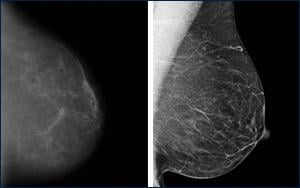
Film vs. Digital Mammography
January 21, 2010 - More than 60 percent of U.S. breast imaging facilities offer digital mammography and more are acquiring digital services each month, and a new study may drive the adoption of digital mammography even further.
Results from one of the largest mammography trials showed that overall the radiation dose associated with digital mammography is on average 22 percent lower than that of conventional film mammography, according to a study published in the February issue of the American Journal of Roentgenology.
The study also found that the reduction in radiation dose from digital mammography compared to analog could be greater in women with larger and denser breasts.
The American College of Radiology Imaging Network (ACRIN) Digital Mammographic Imaging Screening Trial (DMIST) published in 2005, enrolled 49,528 women and found that digital mammography detected significantly (up to 28 percent) more cancers than film mammography in women younger than 50 years of age, premenopausal and preimenopausal women, and women with dense breasts.
In this latest DMIST study, published in AJR, technical data from 5,102 DMIST participants were evaluated, demonstrating that the dose received by women imaged with digital mammography was significantly lower than that received by the same women imaged with standard film mammography.
"The average breast radiation dose per view was 2.37 mGy for film mammography and 1.86 mGy for digital (22 percent lower for digital than film mammography)," indicated lead investigator, R. Edward Hendrick, Ph.D.
While the radiation dose from both film and digital mammography are low, the significant reduction in dose from digital mammography could saves thousands of lives each year, noted Hendrick.
For more information: www.ajronline.org


 December 17, 2025
December 17, 2025 









